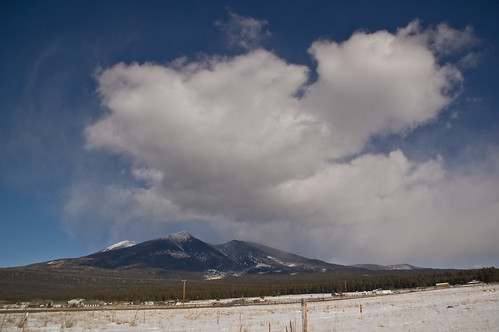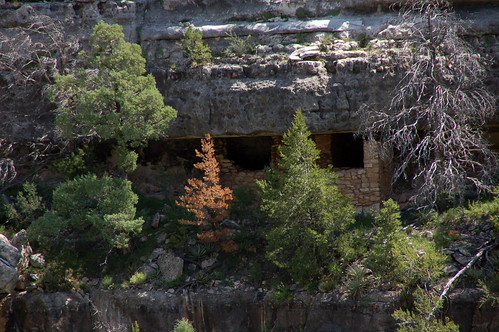The folks at VICE produce a lot of really great videos highlighting cultural practices around the world. I've been a fan of their Americana series for awhile now. Their new travel/adventure series "All the Wrong Places" features exactly what you'd expect from the title - visiting people doing some far out stuff. Take, for example, Peruvian scissor dancing. It's a dance, a test of strength, and a heavy dose of exhibitionism as men - dancers and musicians - perform acts of increasingly cringe-worthy self-mutilation. The part that got the hair on my neck up is when a dude lays down on some cholla cactus. I've felt those before myself - in my legs - and I'm not looking to run into them again, let alone drive dozens of their spikes into my back. Ouch!
Sunday, January 22, 2012
VICE: Peruvian Scissor Dancing
The folks at VICE produce a lot of really great videos highlighting cultural practices around the world. I've been a fan of their Americana series for awhile now. Their new travel/adventure series "All the Wrong Places" features exactly what you'd expect from the title - visiting people doing some far out stuff. Take, for example, Peruvian scissor dancing. It's a dance, a test of strength, and a heavy dose of exhibitionism as men - dancers and musicians - perform acts of increasingly cringe-worthy self-mutilation. The part that got the hair on my neck up is when a dude lays down on some cholla cactus. I've felt those before myself - in my legs - and I'm not looking to run into them again, let alone drive dozens of their spikes into my back. Ouch!
Friday, January 20, 2012
Hopkinton State Park by Matt Faria
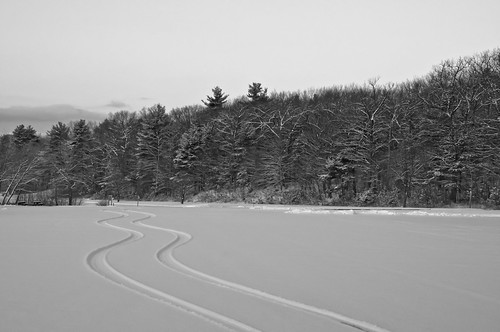
I'm lucky enough to know many talented people. I think my buddy Matt's photos of Hopkinton State Park certainly exemplify what I mean. Anyone who's photographed in New England during the winter knows that it's not easy. Flat skies wash out easily, particularly when a reflective layer of snow covers everything. Matt certainly found good light and took advantage of it.
Check out more of Matt's photos over on his Flickr page or his Tumblr where you can view them at larger sizes.


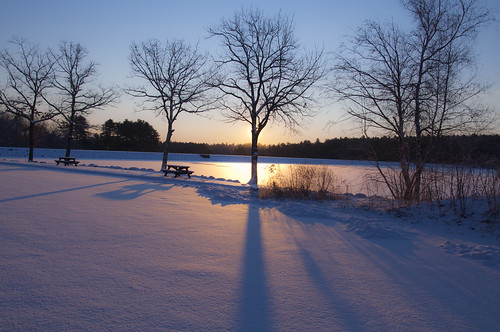

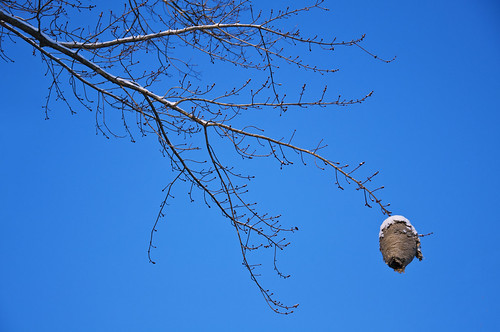

Monday, January 16, 2012
Wild Horses in the Tortolita Mountains
The Sonoran Desert Mountain Bicyclists, based in Tucson, posted this video of wild horses in the Tortolita Mountains on their Youtube channel. Wild horses are not at all common in Arizona, so the trail builder who shot this video was very lucky. Hohokam people lived in the Tortolitas for seven-hundred years and there are accessible Hohokam sites there today.
Sunday, January 15, 2012
Old Growth Forests

In order to be considered "old growth," a forest must no have been logged for over two hundred years. Such forests can contain trees that are hundreds, and in some instances even thousands, of years old. Old growth forests aren't just novelties; they also unique ecosystems and windows into the past.
The key to this helpful (and profoundly sad) graphic explains that each dot represents 25,000 acres of forest. There are smaller stands of old growth throughout most of the country; this Wikipedia page lists the location of many pockets of old growth. Something worth checking out before it's gone.
Tuesday, January 10, 2012
Flagstaff Nordic Center
I've driven by the Flagstaff Nordic Center quite a few times, so I was excited to finally make it up there to do some cross country skiing. It's in a beautiful spot beside the mountains, the trails are well groomed, the people are friendly, and they have yurts! Can't wait to go back.
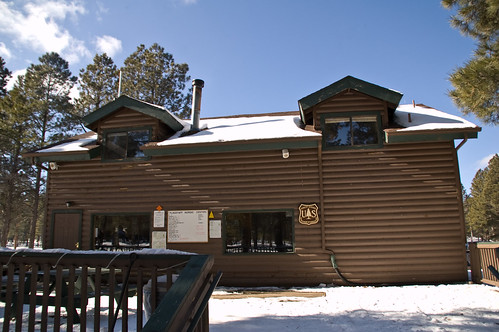


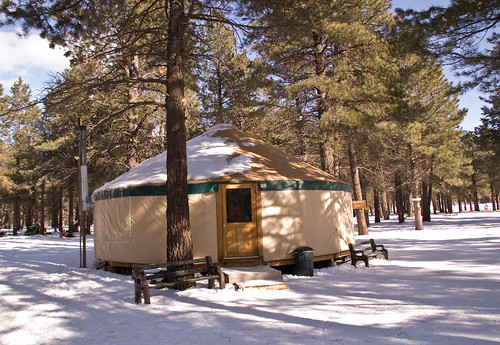

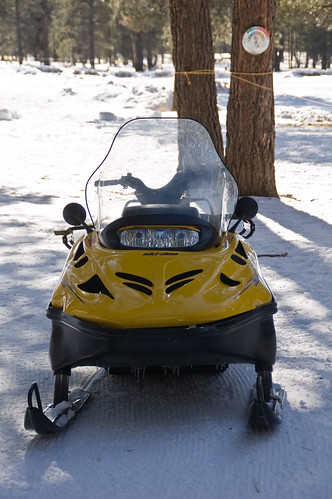






Wednesday, January 4, 2012
Gordon Hirabayashi 1918-2012
Gordon Hirabayashi died on January 2 at age 93. Though he enjoyed a successful career as a sociologist at the University of Alberta, Hirabayashi is best remembered as one of the few Japanese Americans who fought internment during World War II. Backed by the ACLU, Hirabayashi intentionally disregarded a curfew, was arrested, and eventually brought his case, Hirabayashi vs the United States, to the Supreme Court where (surprise! surprise!) he lost. The government didn't have the funding to transport him to a federal prison camp in Tucson, so he hitchhiked from Washington DC to voluntarily serve out his sentence. Keep in mind that his "crime" was not serving out a longer sentence in a different camp simply for being Japanese. The decision was overturned in 1987, a late vindication for Hirabayashi.
The prison camp that once held Hirabayashi and other Japanese Americans is now the Gordon Hirabayashi Campground located along the Catalina Highway in Coronado National Forest. The Forest Service website has more history and photos of the internment camps here. It's strange that we've chosen to honor Hirabayashi by naming the site of his unfair imprisonment after him, but I suppose lending his name to the location reminds us of the injustice that occurred there. I've walked around in the foundations of the old prison camp a few times. It's not much to see, but prisons never are much to see.
Remembering Gordon Hirabayashi and his stand against racial injustice and paranoia seems particularly apropos during our current moment. We watch as our president signs a bill (with "reservations") that allows military detention of citizens without trial and as would-be presidents circle the country promising more foreign wars and greater "domestic security." TSA scanners, unmanned drones patrolling the border, racial profiling, private prisons, GPS tracking without warrant, and the list goes on. Will Hirabayashi's legacy be a recognition that we should not sacrifice rights to security? That fear creates injustice? Or will we just name a pile of decaying prison rocks in the Catalina Mountains after him and go on committing the same foolish errors he fought against seventy years ago? At least we can always remember Hirabayashi's dignity and bravery as our government denied him his freedom be reminded of what being American is supposed to be about.
The prison camp that once held Hirabayashi and other Japanese Americans is now the Gordon Hirabayashi Campground located along the Catalina Highway in Coronado National Forest. The Forest Service website has more history and photos of the internment camps here. It's strange that we've chosen to honor Hirabayashi by naming the site of his unfair imprisonment after him, but I suppose lending his name to the location reminds us of the injustice that occurred there. I've walked around in the foundations of the old prison camp a few times. It's not much to see, but prisons never are much to see.
Remembering Gordon Hirabayashi and his stand against racial injustice and paranoia seems particularly apropos during our current moment. We watch as our president signs a bill (with "reservations") that allows military detention of citizens without trial and as would-be presidents circle the country promising more foreign wars and greater "domestic security." TSA scanners, unmanned drones patrolling the border, racial profiling, private prisons, GPS tracking without warrant, and the list goes on. Will Hirabayashi's legacy be a recognition that we should not sacrifice rights to security? That fear creates injustice? Or will we just name a pile of decaying prison rocks in the Catalina Mountains after him and go on committing the same foolish errors he fought against seventy years ago? At least we can always remember Hirabayashi's dignity and bravery as our government denied him his freedom be reminded of what being American is supposed to be about.
Monday, January 2, 2012
Archaeological Resources Protection Act of 1979
I link to a lot of stuff in the sidebar on the blog. I've come to realize that it's part of what makes blogging "journalish" work, as most of the additions are perhaps more frequently a catalog of personal resources than content consciously offered to readers. But I thought these were neat so I'd point out that I added them. Hike Arizona posts a reminder to read the Archaeological Resources Protection Act of 1979 and a guide to Ruins Etiquette (well-composed by a fellow calling himself Rob del Desierto) on listings for hikes that encounter sites of archeological significance. Lots of great stuff at Hike AZ. Check it out if you're not already familiar.
Subscribe to:
Posts (Atom)

